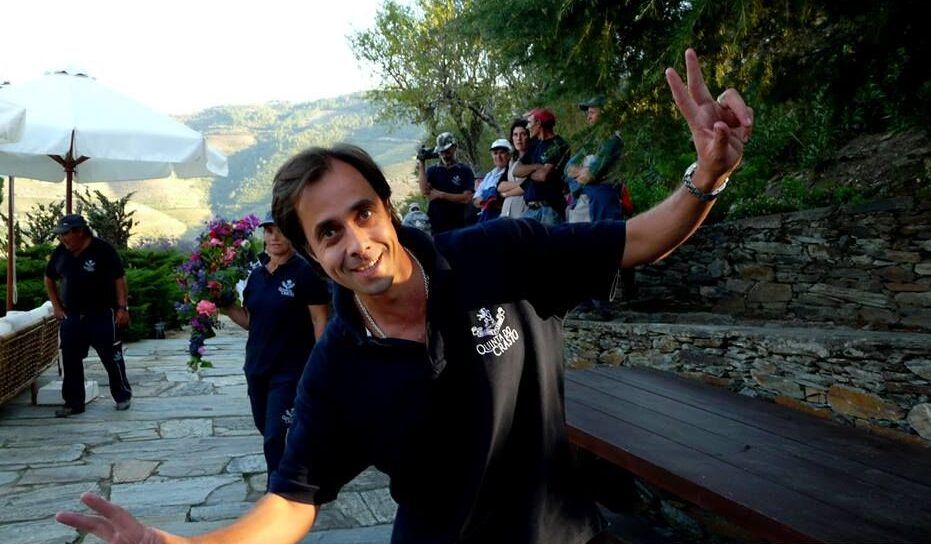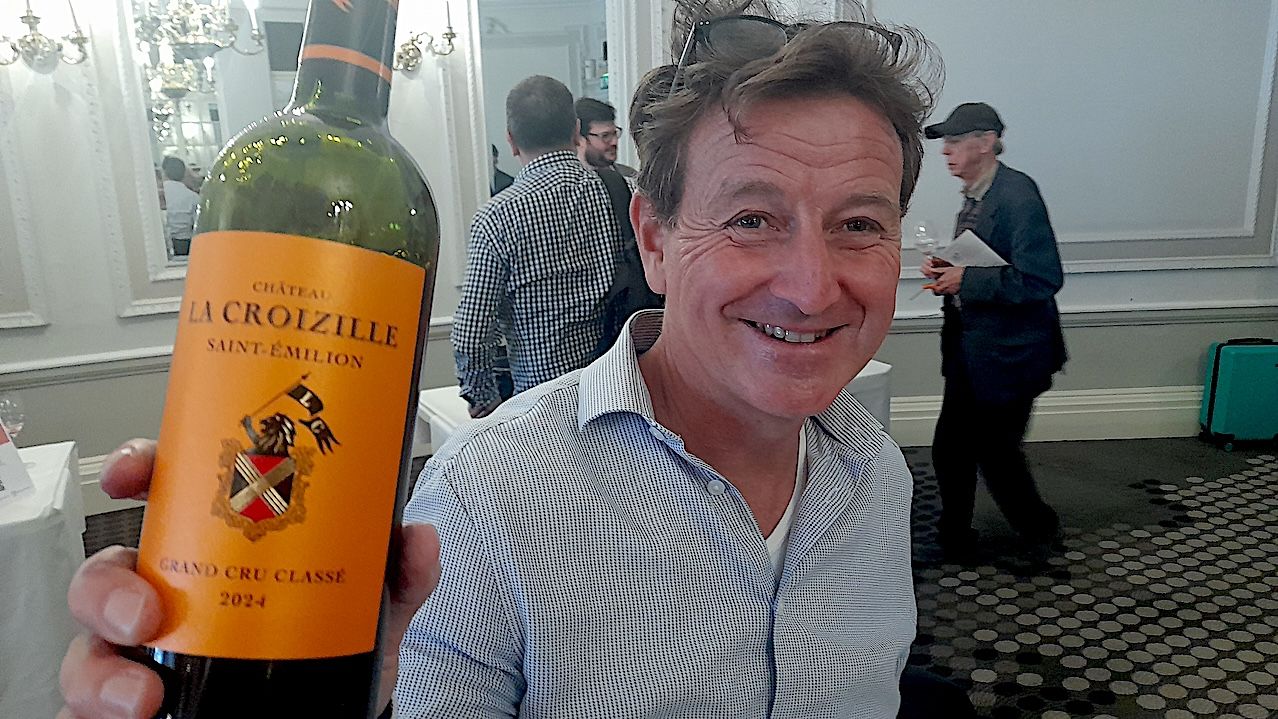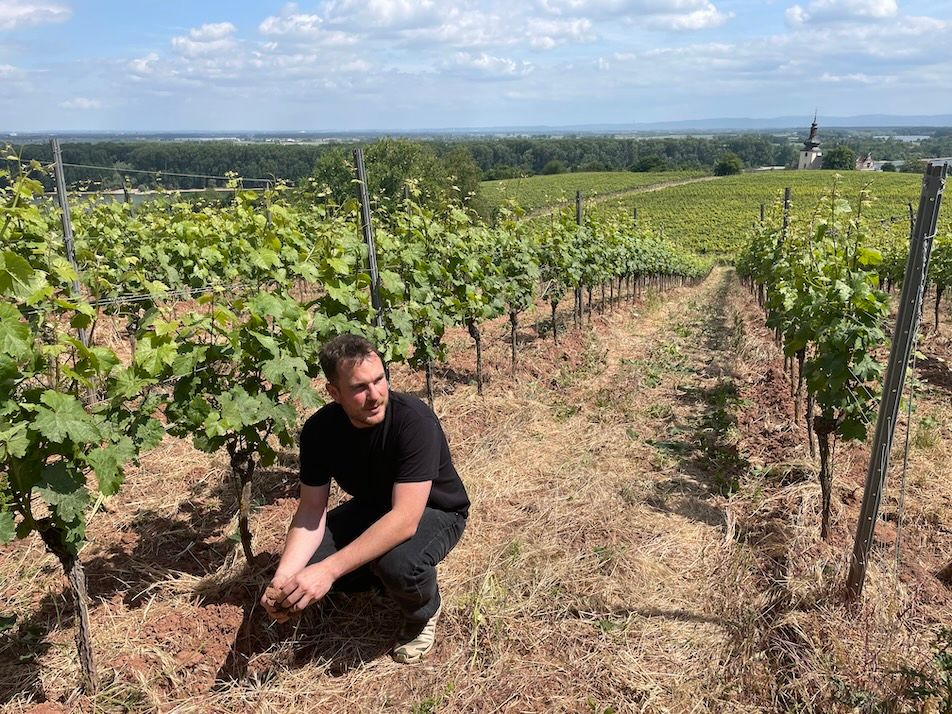“Both of these underlined how far Portuguese still wines have come in recent years, and what value they continue to offer,” writes Dean.
One of the more imaginative field blend plantings in recent times – by Luís Louro in the Alentejo – epitomises the new-found creativity of many of Portugal’s winemakers. Earlier this year, Louro identified a one-hectare block formerly used for grain cultures near the town of Estremoz and planted as many as 36 different Portuguese varietals together.
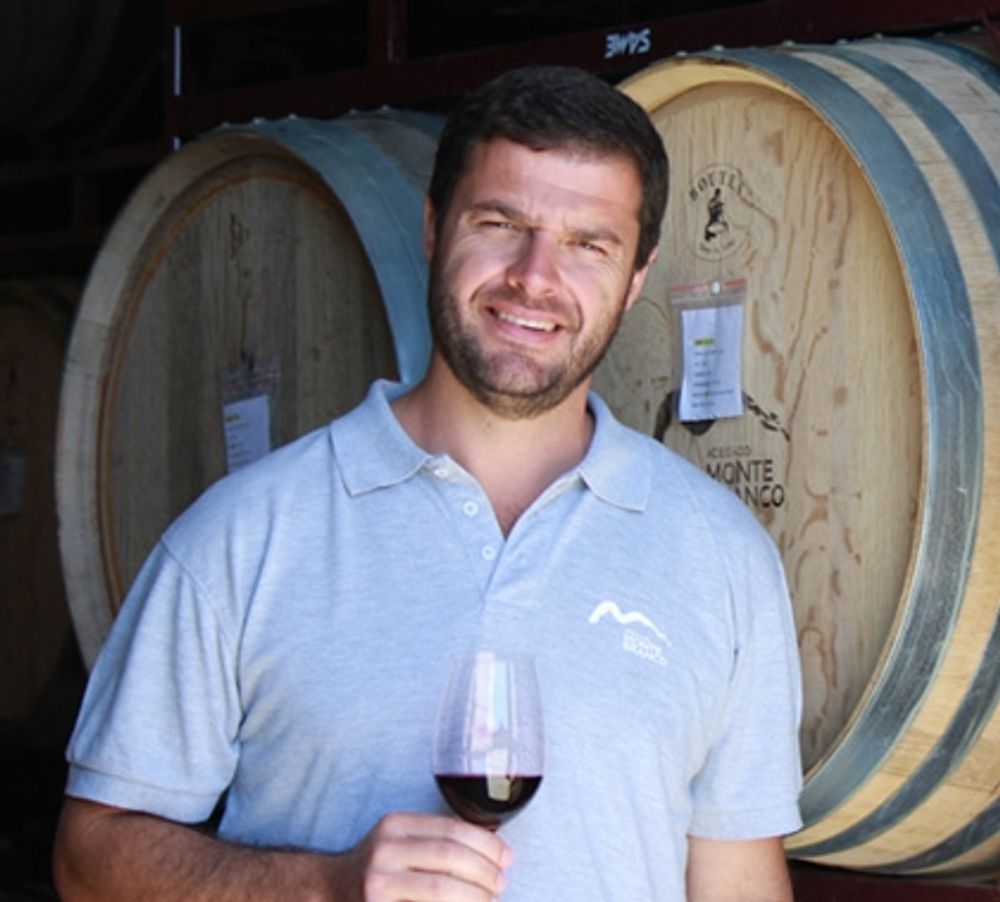
Luís Louro
These (80% red and 20% white) consist of many that are typical to Alentejo but planted less and less. “Like Tinta Carvalha, Moreto, Alfrocheiro, Castelão, Perrum, Rabo Ovelha and Manteudo,” he told me on a recent visit to his Adega Monte Branco winery. “I also planted others from regions that are not common or even not planted, as far as I know, in the Alentejo like Rufete, Ramisco, Alvarelhão, Marufo and Baga. The first harvest will be in two or three years time, and I will co-ferment all 36 together.” The end result will be a fascinating one.
Luís, son of Miguel Louro of Quinta do Mouro fame, set up on his own and is making an impressive multi-price range from indigenous grapes that is worthy of UK representation (which he is seeking). At the everyday drinking end is his white Alento Branco 2020 (from Arinto, Antao Vaz and Roupeiro) with its tropical fruit notes and refreshing acidity, while at the top end is his red Monte Branco 2016, made from his best vineyard parcels of Alicante Bouschet and Aragonez. His mid-market wines are superb value.
If Luís Louro heads the vanguard of the younger brigade of winemakers, the greybeards of wisdom in Portugal remain masters of their craft. These include the likes of Vasco Garcia (winemaker at Bacalhoa), Domingos Soares (José Maria da Fonseca) Osvaldo Amado (Global Wines of Portugal), Jaime Quendera (Casa Ermelinda Freitas) and Manuel Lobo (Quinta do Crasto).

Vasco Garcia at Bacalhoa
Bacalhoa: an advocate of Moscatel de Setúbal
Good though his still red and whites are, Vasco Garcia at Bacalhoa remains a consummate producer of Moscatel de Setúbal, one of Portugal’s great fortified wines even if it does not enjoy the same brand awareness as Port and Madeira. It is made from Muscat of Alexandria grapes in the Setúbal peninsula just south of Lisbon. “What makes Moscatel de Setúbal unique is the balance between very high acidity from early picking and very high sweetness, as well as bitterness which is not often found in wines,” Garcia declared.
“The difference with Setúbal is that we keep the skins. When we add brandy spirit to stop the fermentation, it is to the juice and the skins. We then leave the maceration until the spring when we press, fill the barrels and leave them for a minimum of two years. This is in special warehouses where we have natural shocks of temperature: 50°C in summer and minus 2°C in January at night. We never top up the barrels, and the evaporation leads to concentration not just in sugar but also in acidity. We end up with 200-250 g/l of residual sugar but a really low pH of 3.” Garcia added that a two-year old wine would have lower residual sugar of 140-50 g/l while a 30-year old would have 280 g/l.
We tasted a 2005 Moscatel de Setúbal from Bacalhoa, that was fortified to 17% abv. Dark amber in colour, with orange blossom on the nose, it boasted a glorious combination of orange peel, caramel, dried fruit and spices with a magnificently long finish.
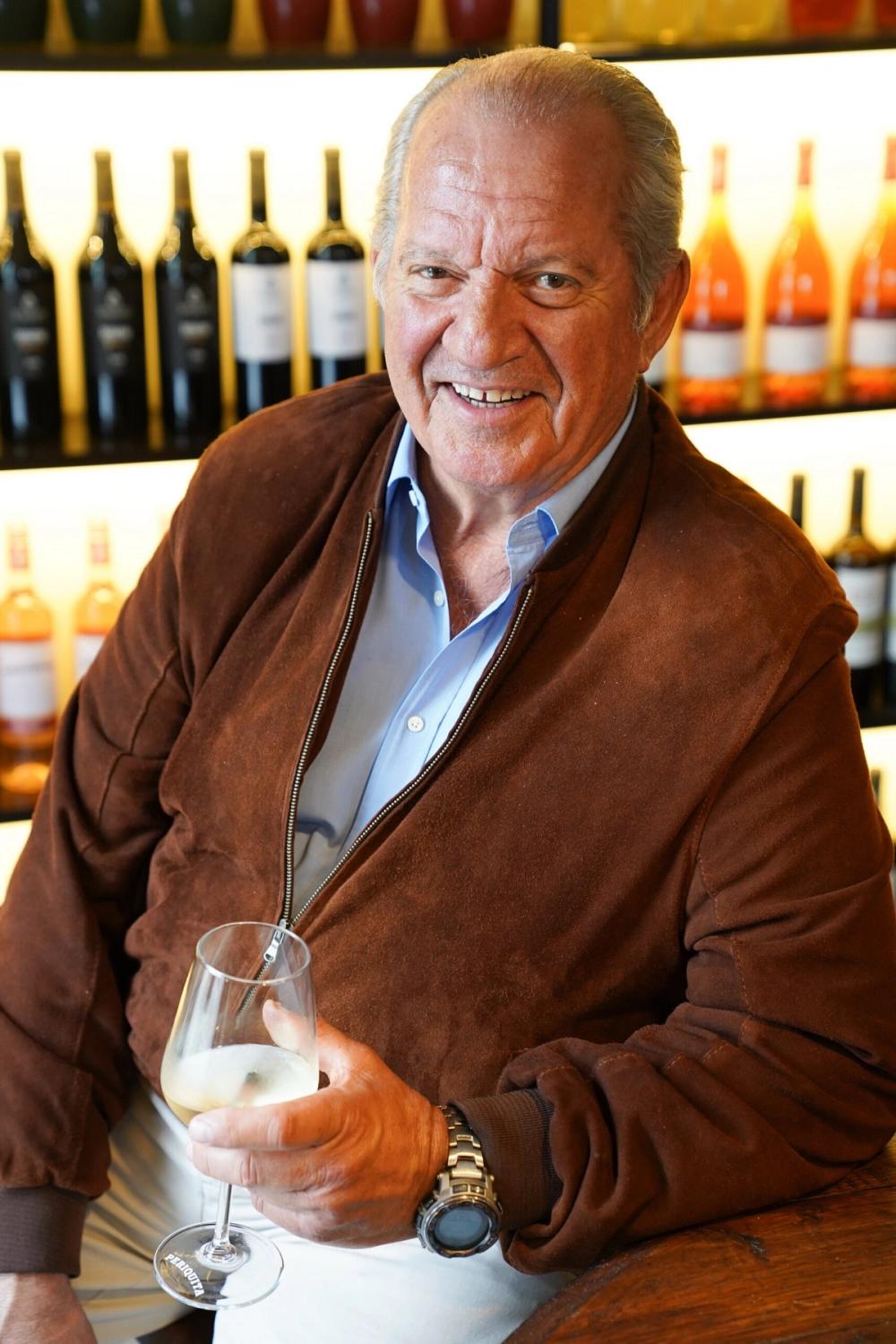
Domingos Soares
Soares also flying the flag for Sétubal reds
José Maria da Fonseca is thought to have been the first winery to produce Moscatel de Setúbal, with vintages in the family cellar dating back as far as 1880. The stylistic difference between their two versions made with Armagnac and Cognac was clear, with the former being more citric and floral, and the latter bigger and richer.
With 650 hectares under vine, the estate produces more still wine, with celebrated winemaker Domingos Soares always looking to come up with unusual blends of both reds and whites. It was he who brought the white grape Viosinho down from the Douro in 1992, and 51% of it is found in his delightful Pasmados 2015 label, which included 30% Viognier and 19% Arinto. The Viosinho gives both fragrance and structure, with melon and peach notes being prominent.
Six black grapes go into José Maria da Fonseca’s flagship red, a beguiling wine aptly named Hexagon. We tasted the 2015, with Soares’ favourite varietal, Touriga Franca the majority one, with the other five being Touriga Nacional, Trincadeira, Syrah, Tinto Cão and Tannat. At 14% abv, with fresh acidity and soft tannins, this rich and intense blend showed how good Setúbal reds can be.
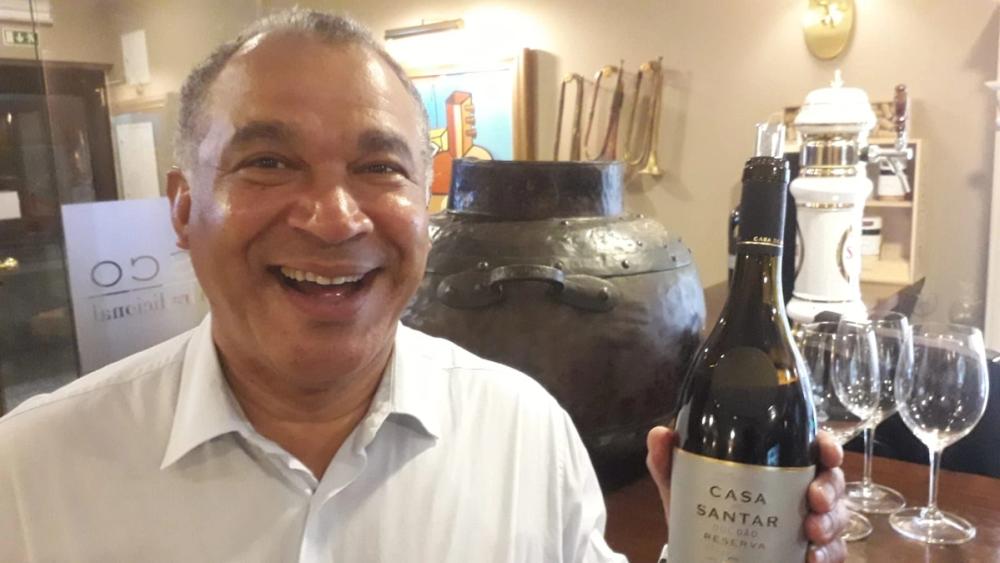
Osvaldo Amado of Global Wines of Portugal
Down amongst the ‘big boys’
Osvaldo Amado is another larger-than-life character, who is one of Portugal’s leading winemakers. He has a very wide brief overseeing the multiple brands of Global Wines, which exports to 45 countries. The company produces wine from Dão, Douro, Lisbon, Bairrada, Alentejo and even Brazil. We tasted wines from leading Dão estate, Casa de Santar, whose two sparkling Vinha Dos Amores labels showed particularly well. Both had zero dosage, a pH of 3.1 and an abv of 12.5%, with the Encruzado, a blanc de blancs, spending six years on the lees. The Touriga Nacional saw four years on the lees.

Jaime Quendera of Casa Ermelinda Freitas
Even bigger than Global Wines are Casa Ermelinda Freitas, which has 550 hectares under vine of their own but buy in fruit from 150 growers. An annual output of 20 million litres, half of which services the bag-in-box market, makes them the second biggest producer in Portugal after Sogrape. “1997 was our first year of bottling,” head winemaker Jaime Quendera said. “We are 25 kilometres from the sea on poor, sandy Palmela soils but are lucky to have plenty of water as we are on the main underground repository in Portugal. It’s hot here but our vines are cooled off by sea breezes. We grow over 30 varietals. ”
Five of these – Touriga Nacional, Touriga Franca, Aragonês, Shiraz and Cabernet Sauvignon – go into their top red, the Dona Erleminda Grande Reserva. The 2017 comfortably absorbed 100% French new oak in which it spent 18 months before another 18 in bottle pre-release. From 20-year old vines yielding under two tons per hectare, it had notable concentration and offered good value at €25 retail.
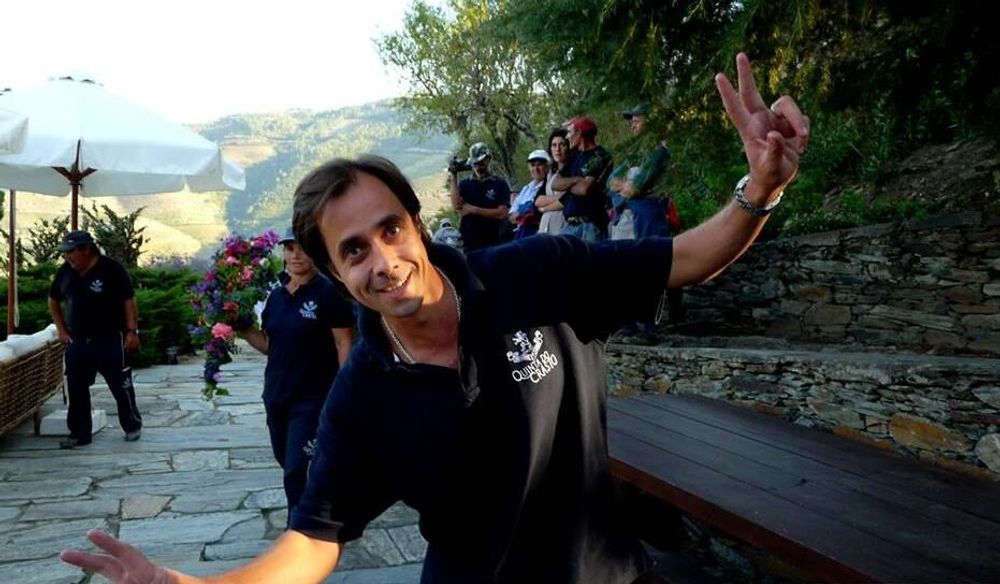
Manuel Lobo
One of the best reds encountered in a week in Portugal was the Quinta do Crasto Douro Touriga Nacional 2017, whose winemaker Manuel Lobo was a fellow judge at the Wines of Portugal Challenge in Santarem. Only made in the best years from 35-year old vines, this had classy, elegant fruit as well as structure from some fine French oak. Complex with excellent concentration and length, this really pushed Touriga Nacional to another level, being well worth its €55 price-tag. So too was another similarly-priced red blend from the Douro, the Quinta Vale D. Maria Vinha da Francisca 2018, which comprised five grapes – Tinta Francisca, Touriga Franca, Sousao, Rufete and Touriga Nacional. Both of these underlined how far Portuguese still wines have come in recent years, and what value they continue to offer.
